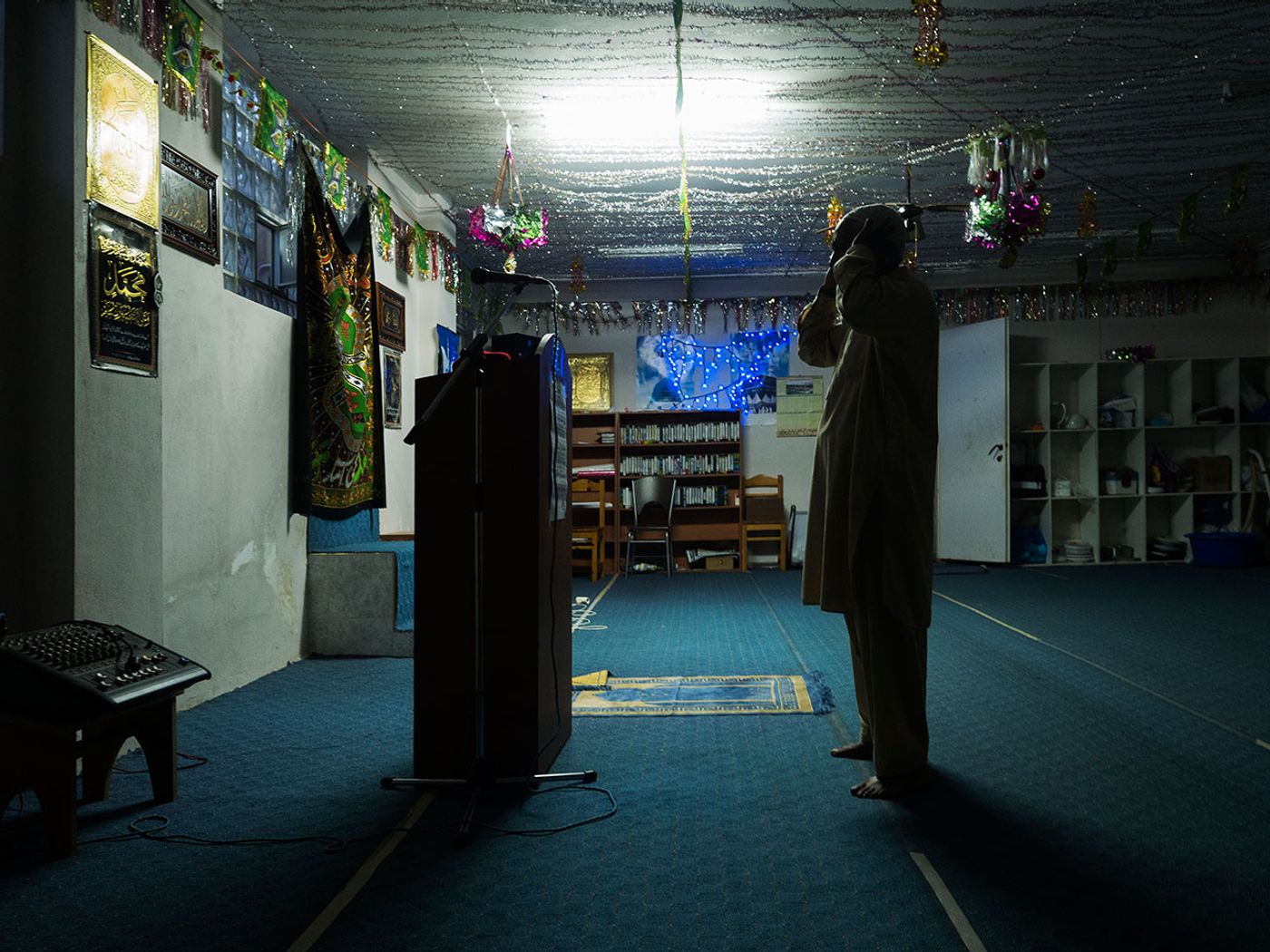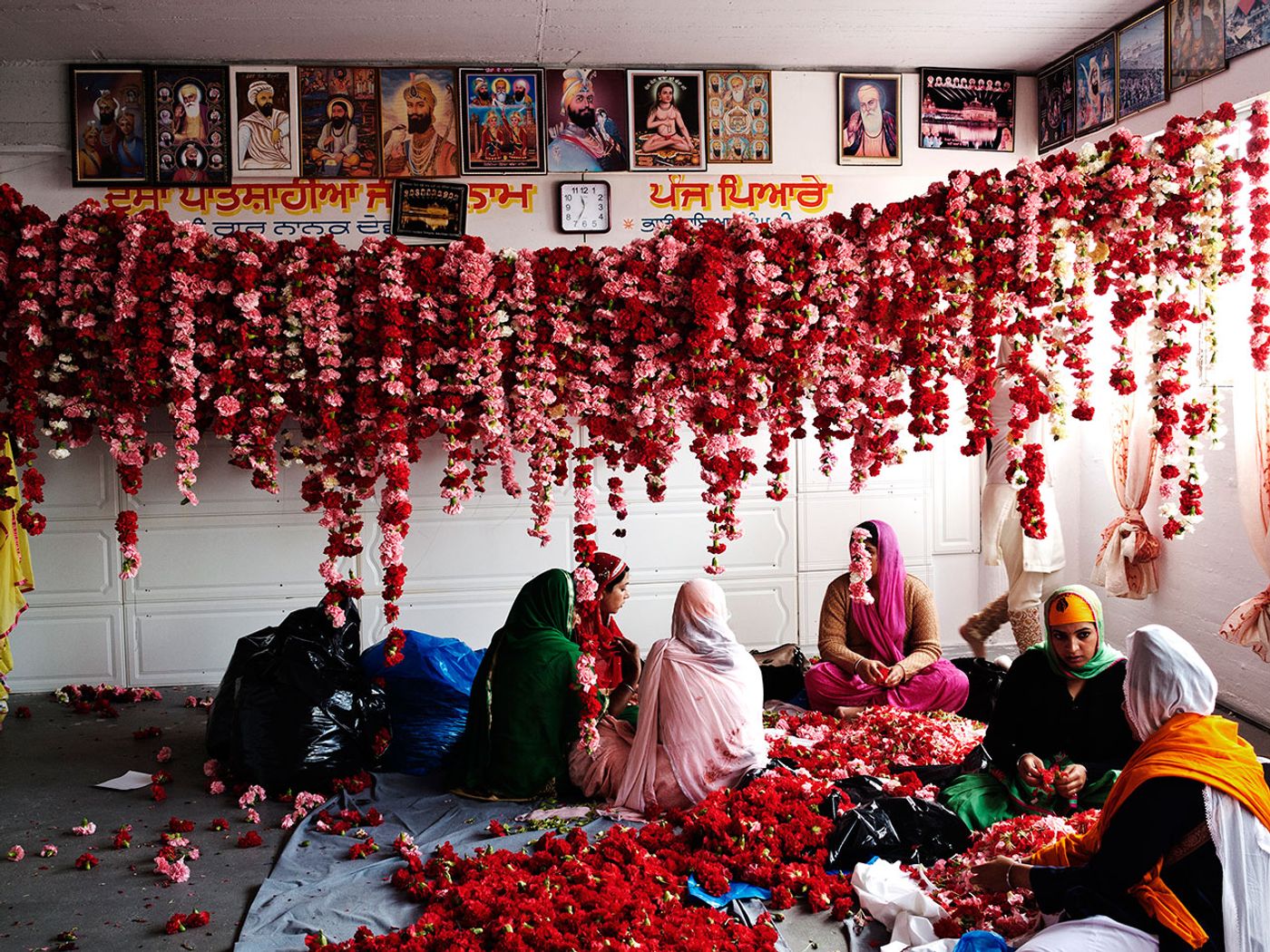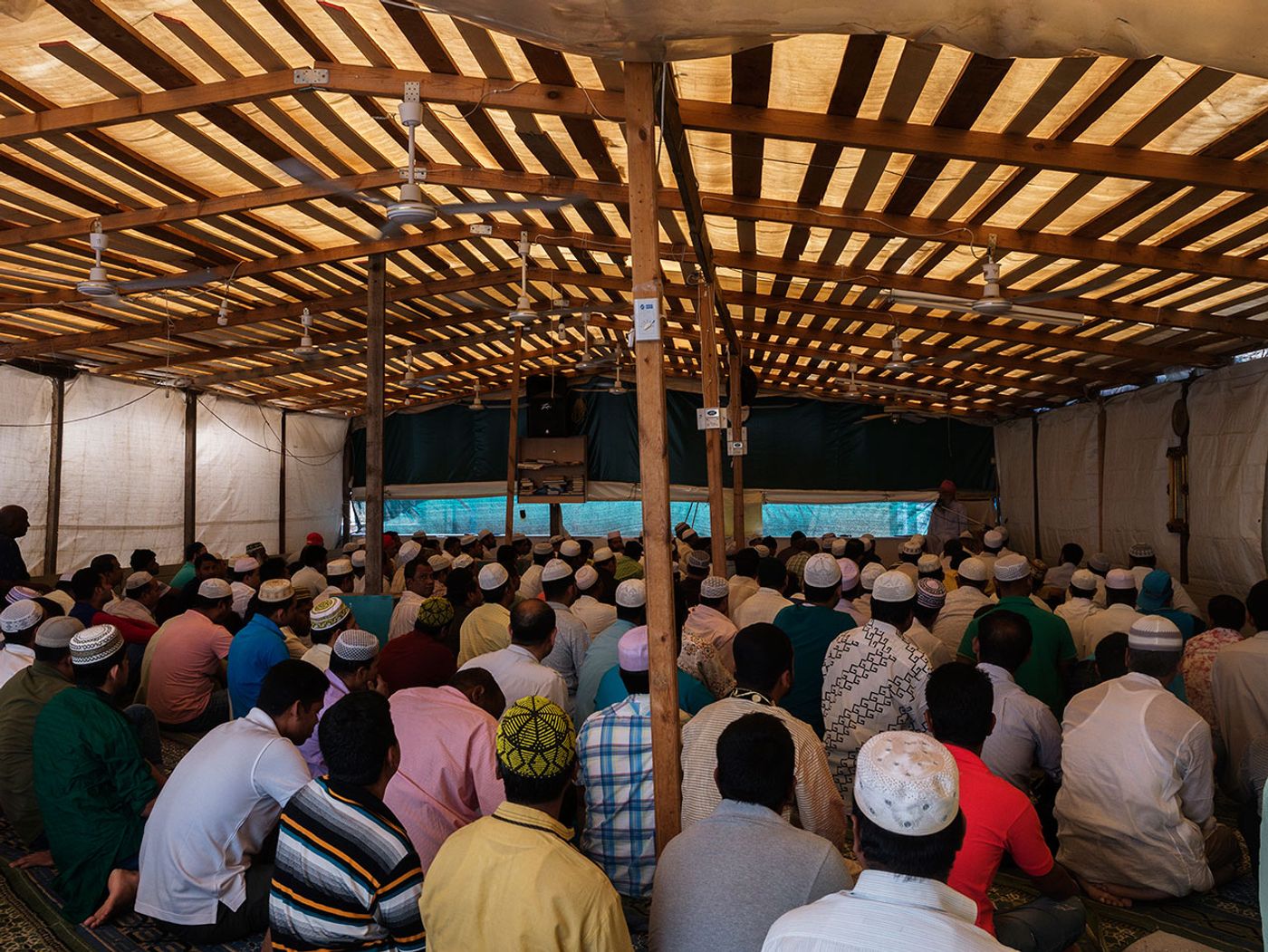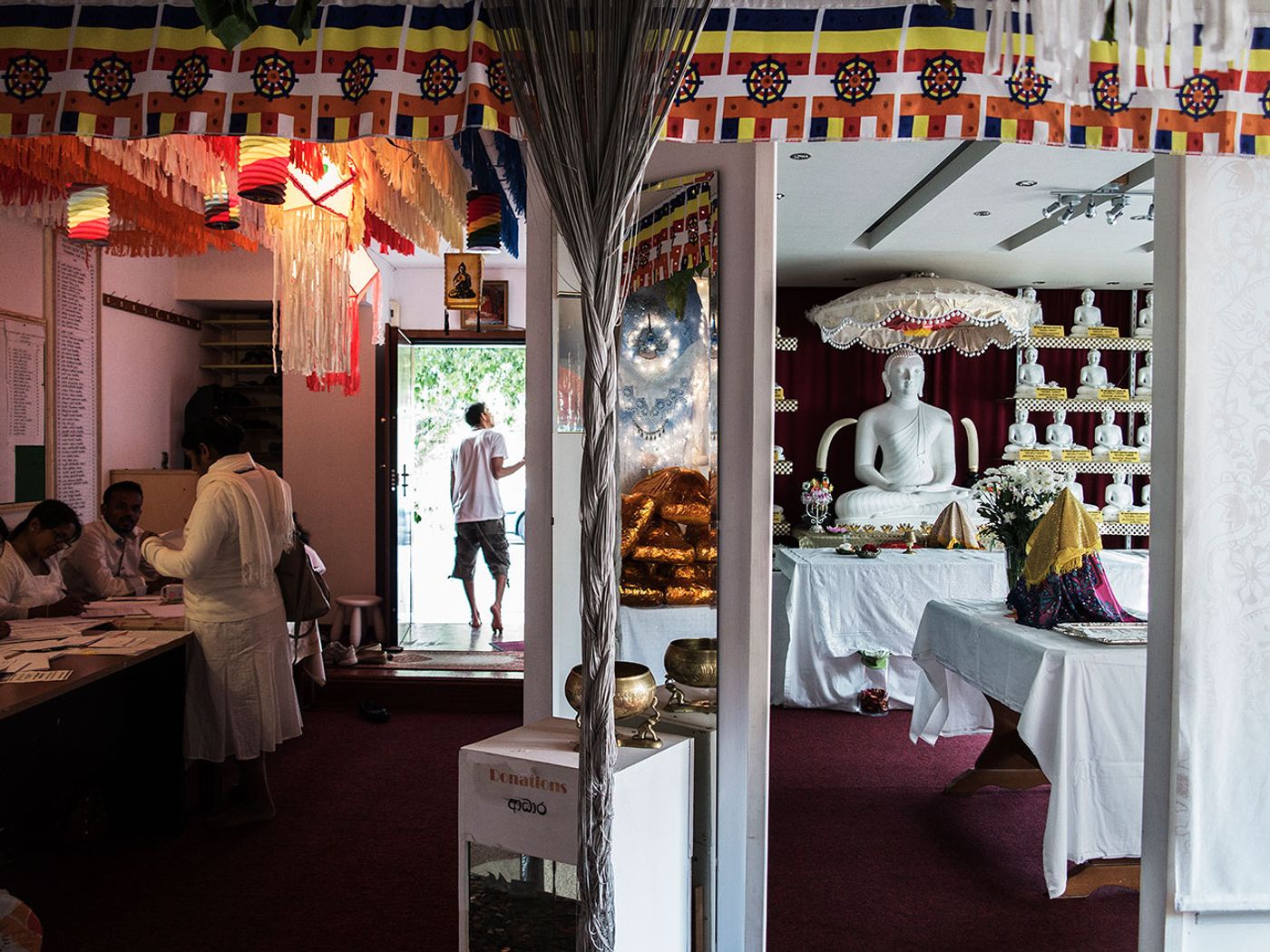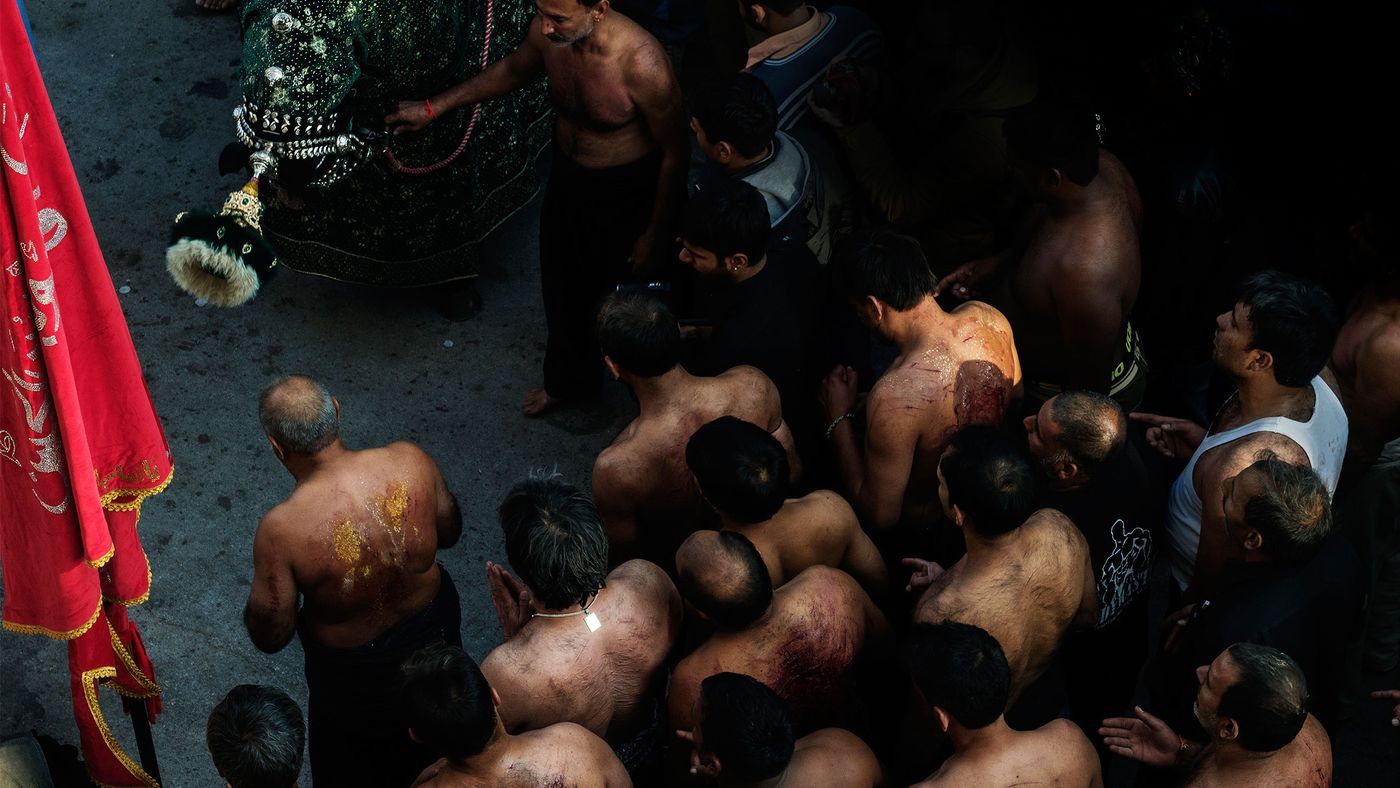
Wor(th)ship: Tassos Vrettos Documents the Underground Mosques, Temples and Churches of Athens
Words by Kiriakos Spirou
Location
Athens, Greece
Wor(th)ship: Tassos Vrettos Documents the Underground Mosques, Temples and Churches of Athens
Words by Kiriakos Spirou
Athens, Greece
Athens, Greece
Location
In a country like Greece, where a powerful Church actively lobbies against religious and cultural diversity, and rising far-right groups seek to oppress immigrants and other minorities, to observe any religious belief other than Orthodox Christianity is often in itself an act of resistance. Over the years, immigrants from various religious backgrounds have founded places of worship in Athens, the vast majority of which were illegal, and thus secret, tucked away in dark basements, garages and unmarked shops with painted windows. There are dozens of these makeshift churches, mosques and temples all around Attica, from right in the heart of the city to the small satellite towns surrounding the capital, yet only a few have acquired the necessary permit from the state for their operation. In fact, most of them run on meagre resources and are more like underground speakeasies where not everyone is allowed to enter, or know their exact location for that matter.
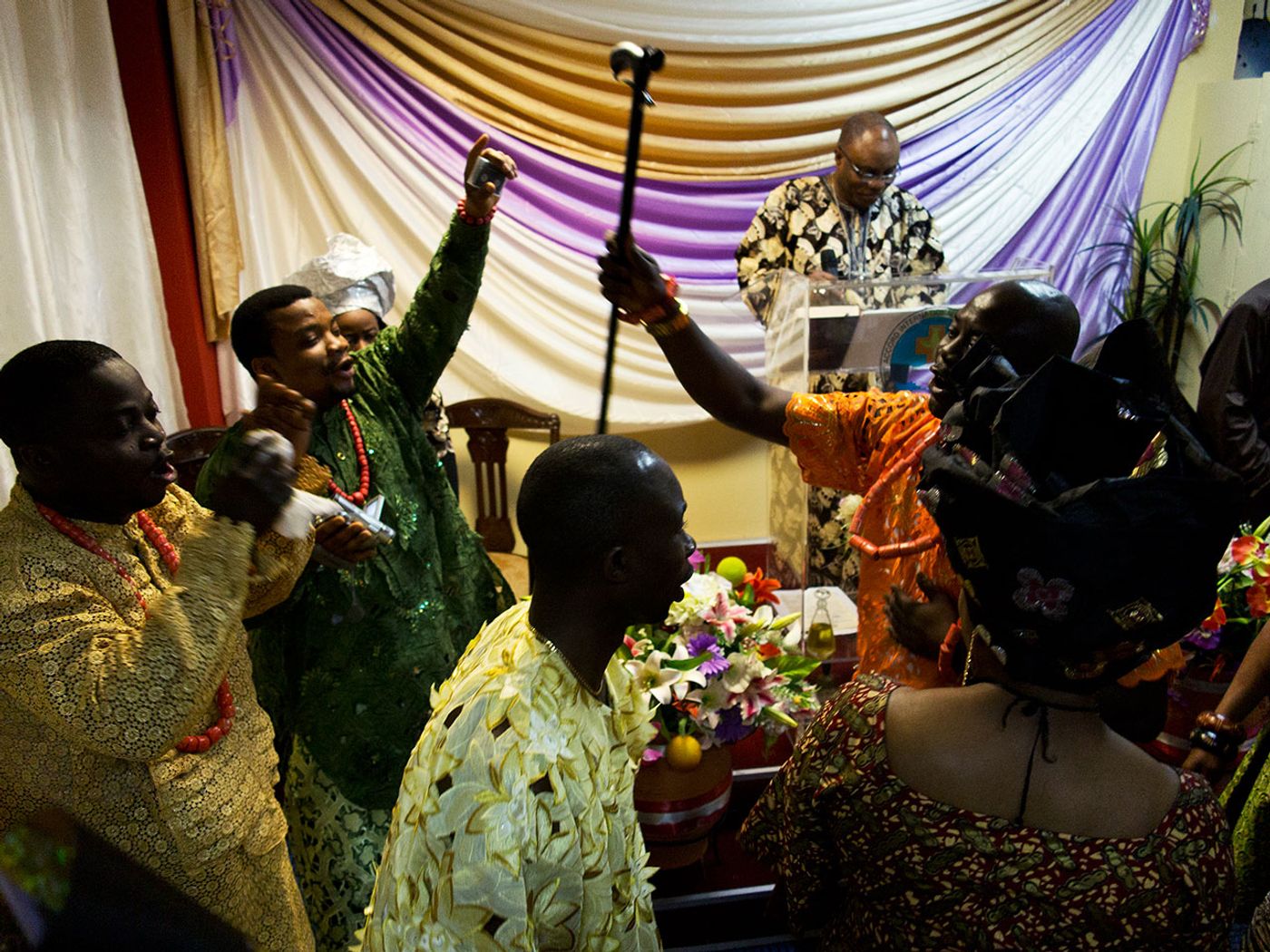
One Accord International Gospel Ministries (Nigerian Evangelical), Kypseli © Tassos Vrettos.
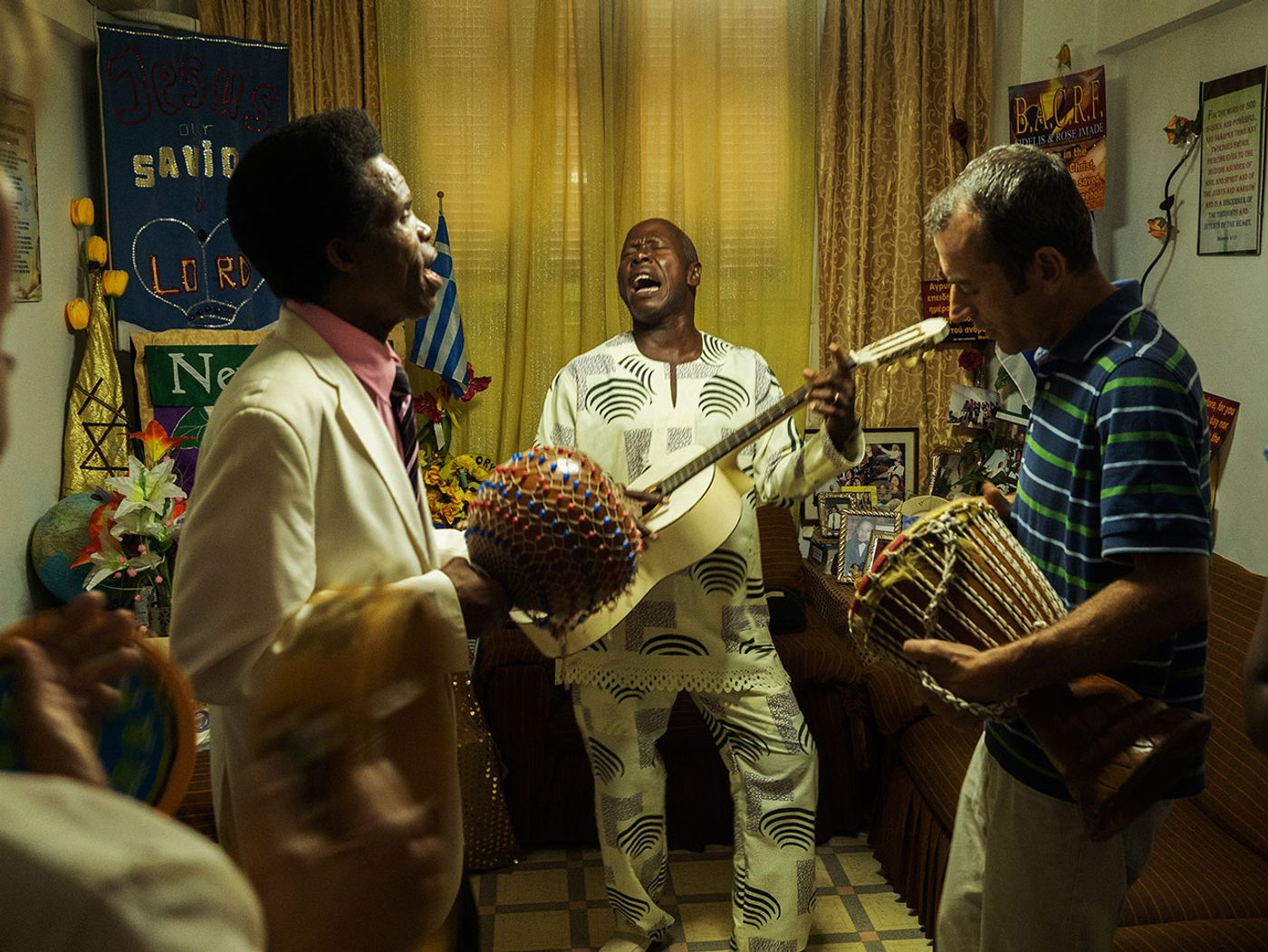
B.A.C.R.F. Fidelis & Rose Imade, Patissia © Tassos Vrettos.
Over the past three years or so, and after gaining the trust of religious groups around Athens, Greek photographer Tassos Vrettos has been allowed to visit no less than 44 of these places of worship of Christians, Hindus, Muslims and others, and document the rites, prayers and other events that take place there. The result of this long and meticulous fieldwork is the Wor(th)ship series, which is currently on show at the Pireos Str. Annexe of the Benaki Museum in Athens and has been published as a 384-page exhibition catalogue. A seasoned art- and fashion-photographer, Vrettos is known for a detached point of view and a painterly, often twisted approach to realistic scenes and subject matter —something that, in fact, the Wor(th)ship series seems to move away from. Here, Vrettos focuses again on the human body but always in relation to the social bonds between the members of the group it belongs —whether it be young self-flagellating Muslim men or flower garland-weaving Sikh women. At the rare cases where Vrettos captures a body in solitude, it is again in relation to something else, namely the individual’s quest for spiritual enlightenment, sense of belonging and religious fulfilment.

End of Ramadan (Pakistani Muslims), Peristeri © Tassos Vrettos.
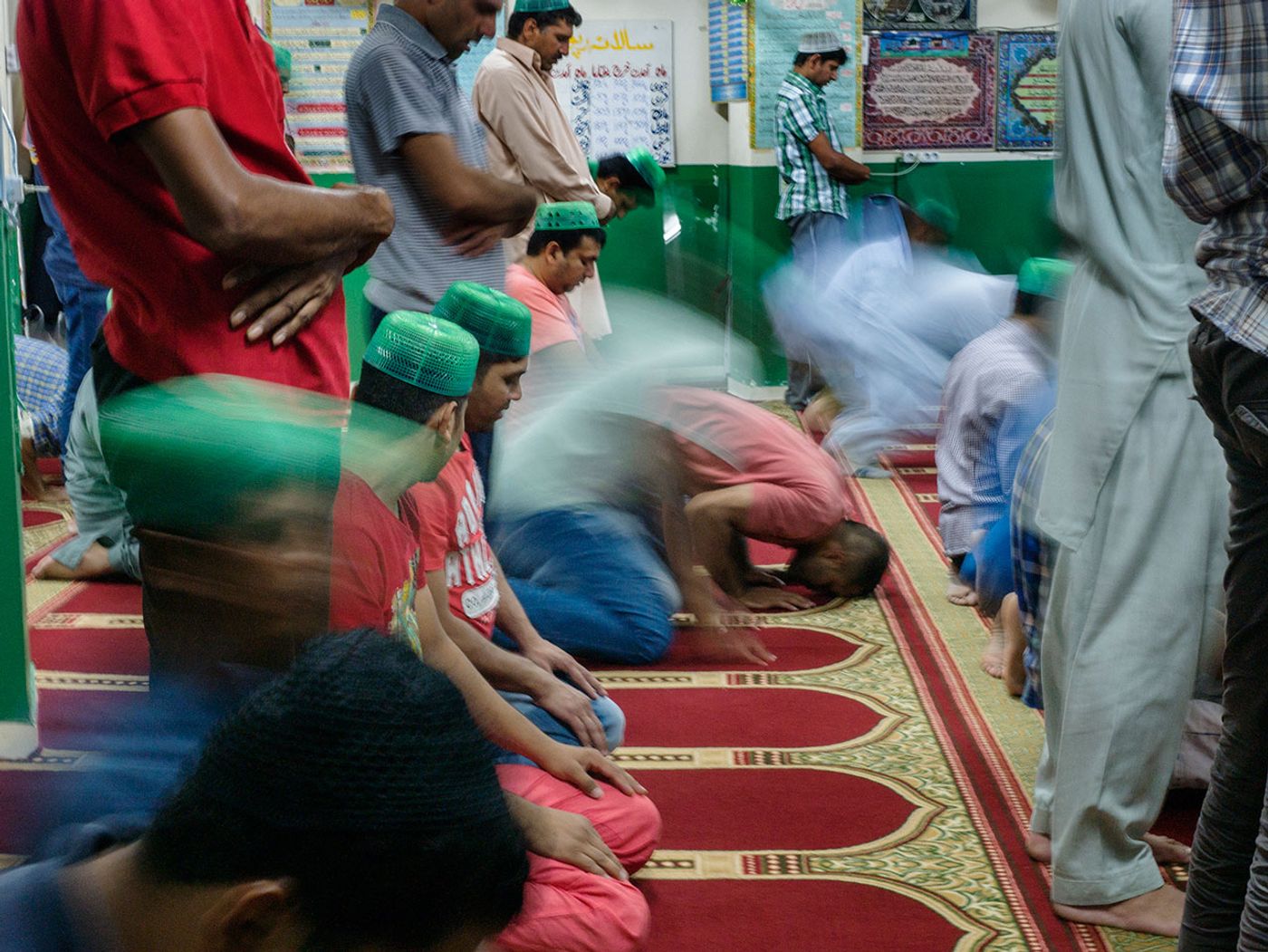
Gulzare Madina Mosque, Nea Ionia © Tassos Vrettos.
Peaceful, moving and full of empathy, these images are a real eye-opener for most Athenians, who are often oblivious of the sheer amount of different cultures and social groups that have made their city their home. At a time where immigrants and refugees can easily become the scapegoat of pressing issues shaking the country at its very core, Vrettos’s photography inverts the foreigner’s stigma and exposes these impromptu religious sites for what they are: respectful and sacred, not because of their relation to deities of any kind, but rather as places where identity, community and tradition are celebrated and the human spirit is elevated above the hardships of displacement and exclusion.
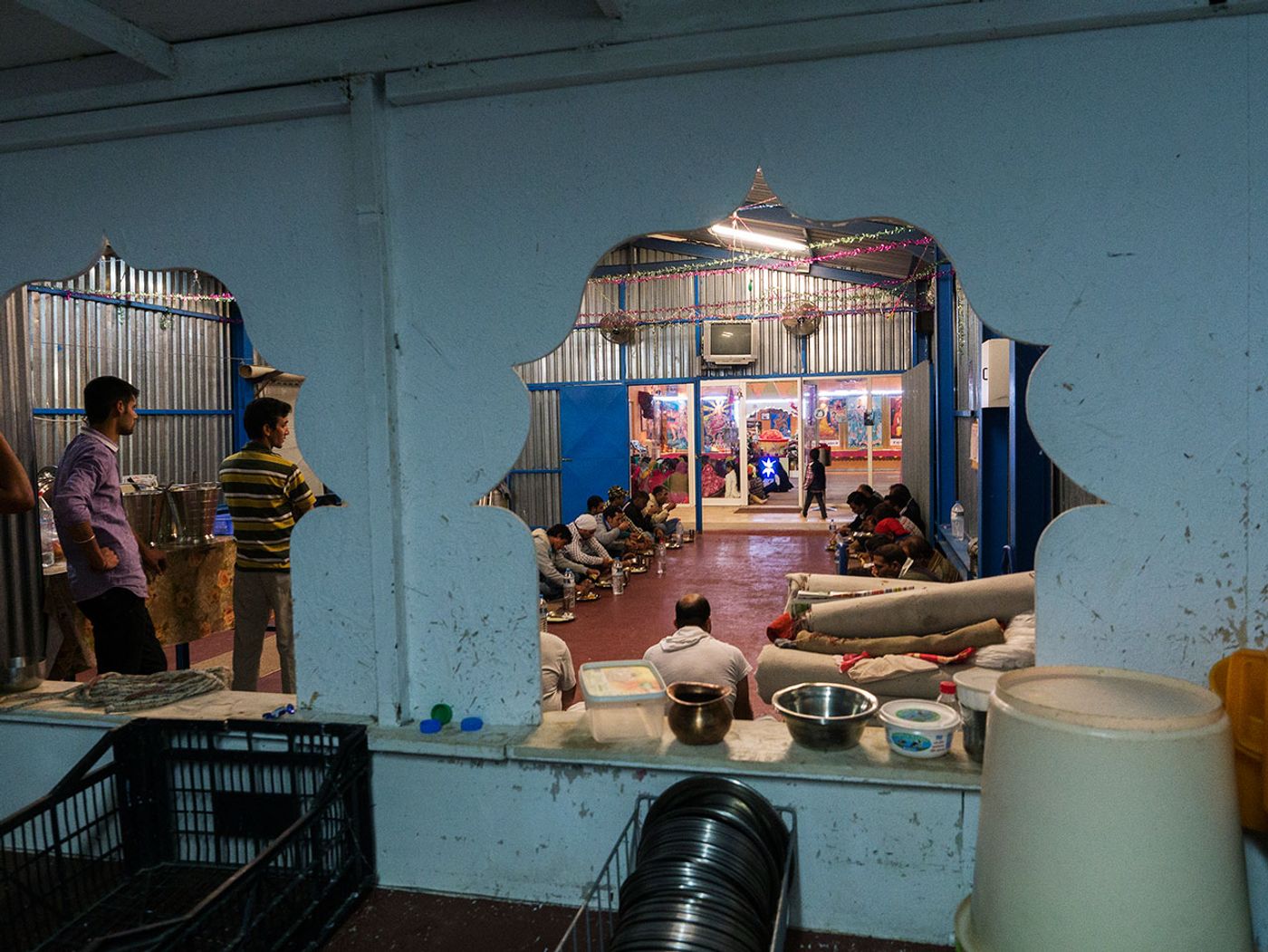
Hindu Sewa Sangh Mandir, Dilessi © Tassos Vrettos.
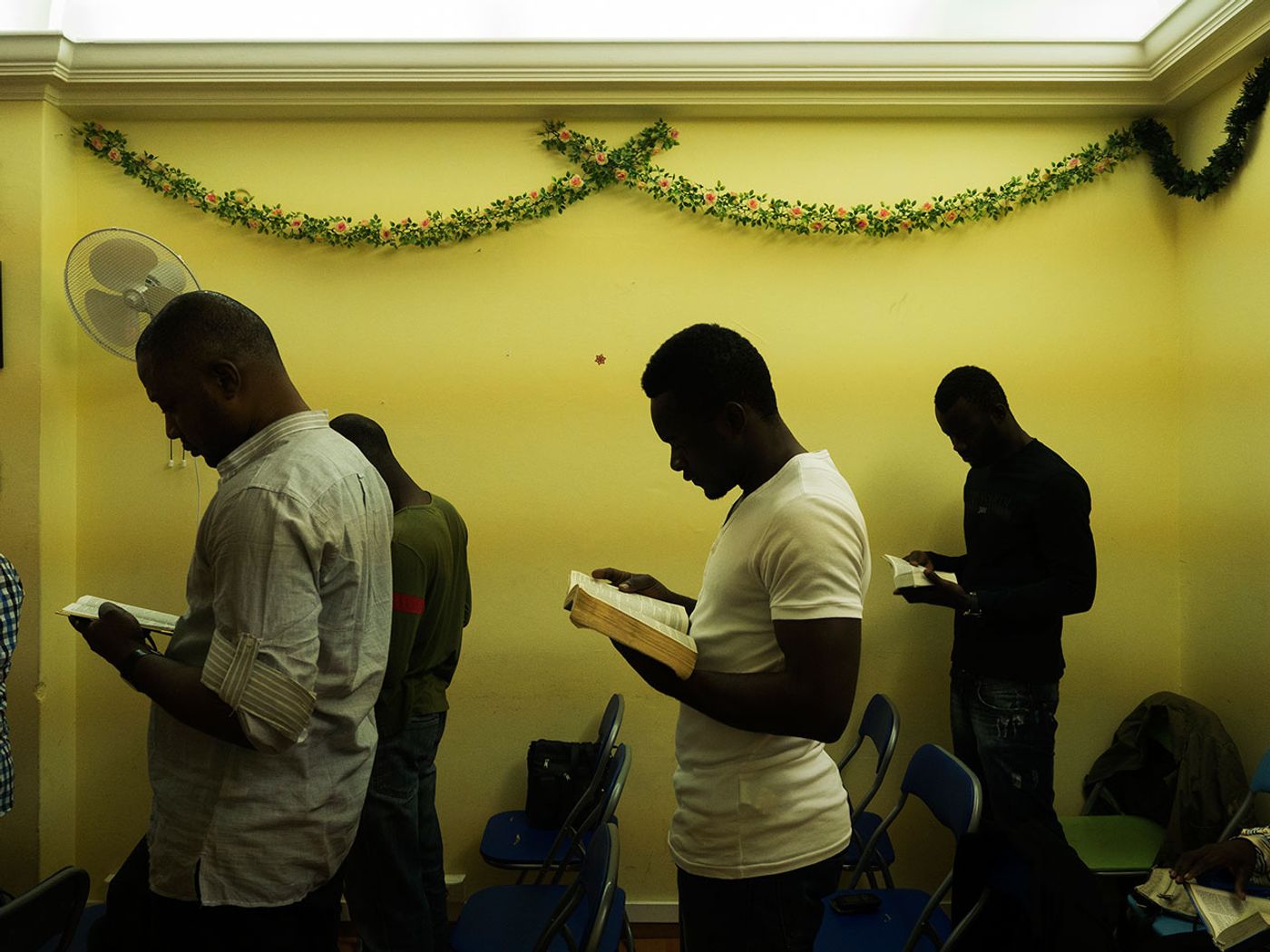
New Testament Ministry, Aiolou street © Tassos Vrettos.
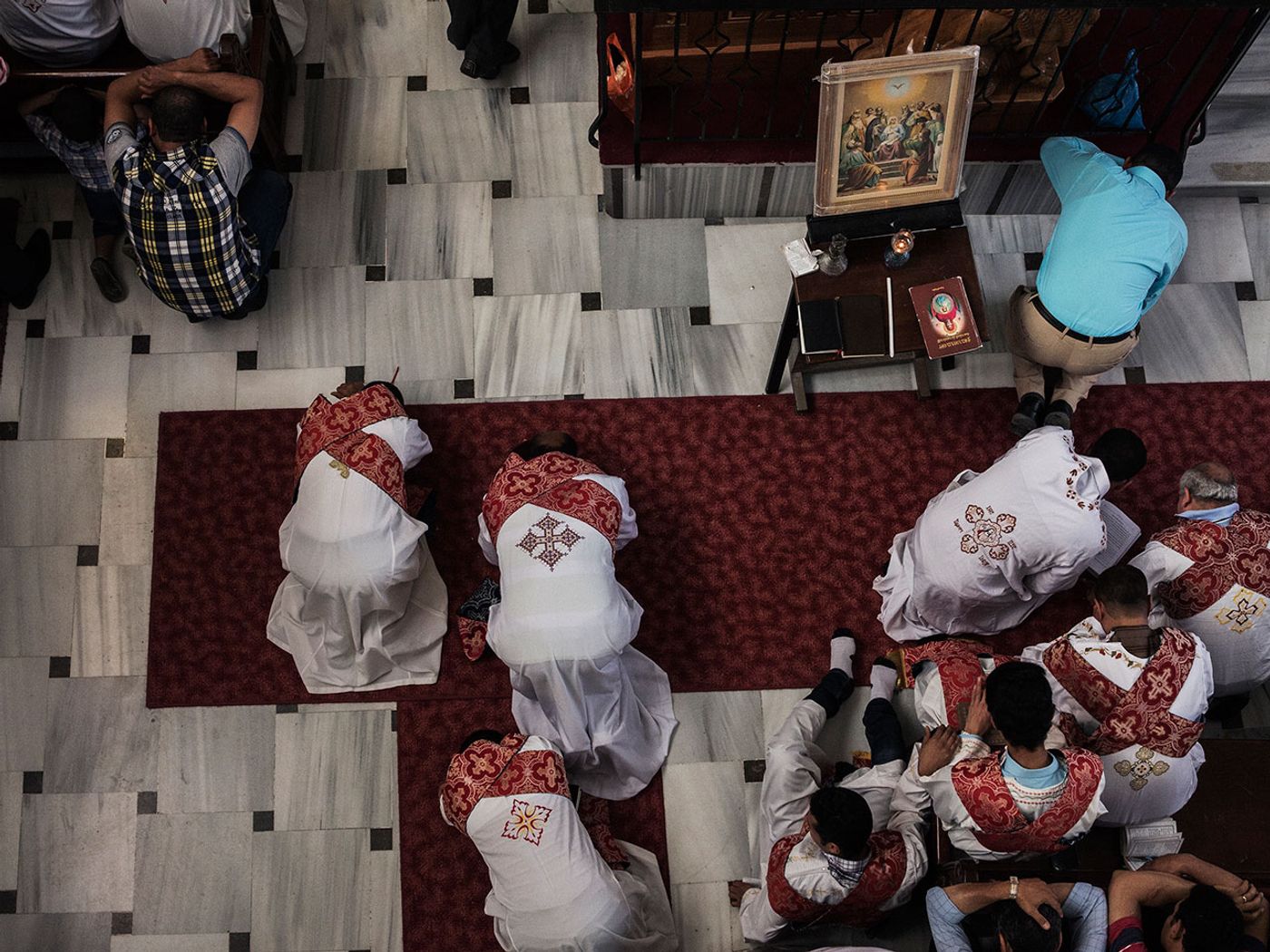
Egyptian Orthodox Christian Copts - Church of Virgin Mary and Mark the Evangelist, Menidi © Tassos Vrettos.
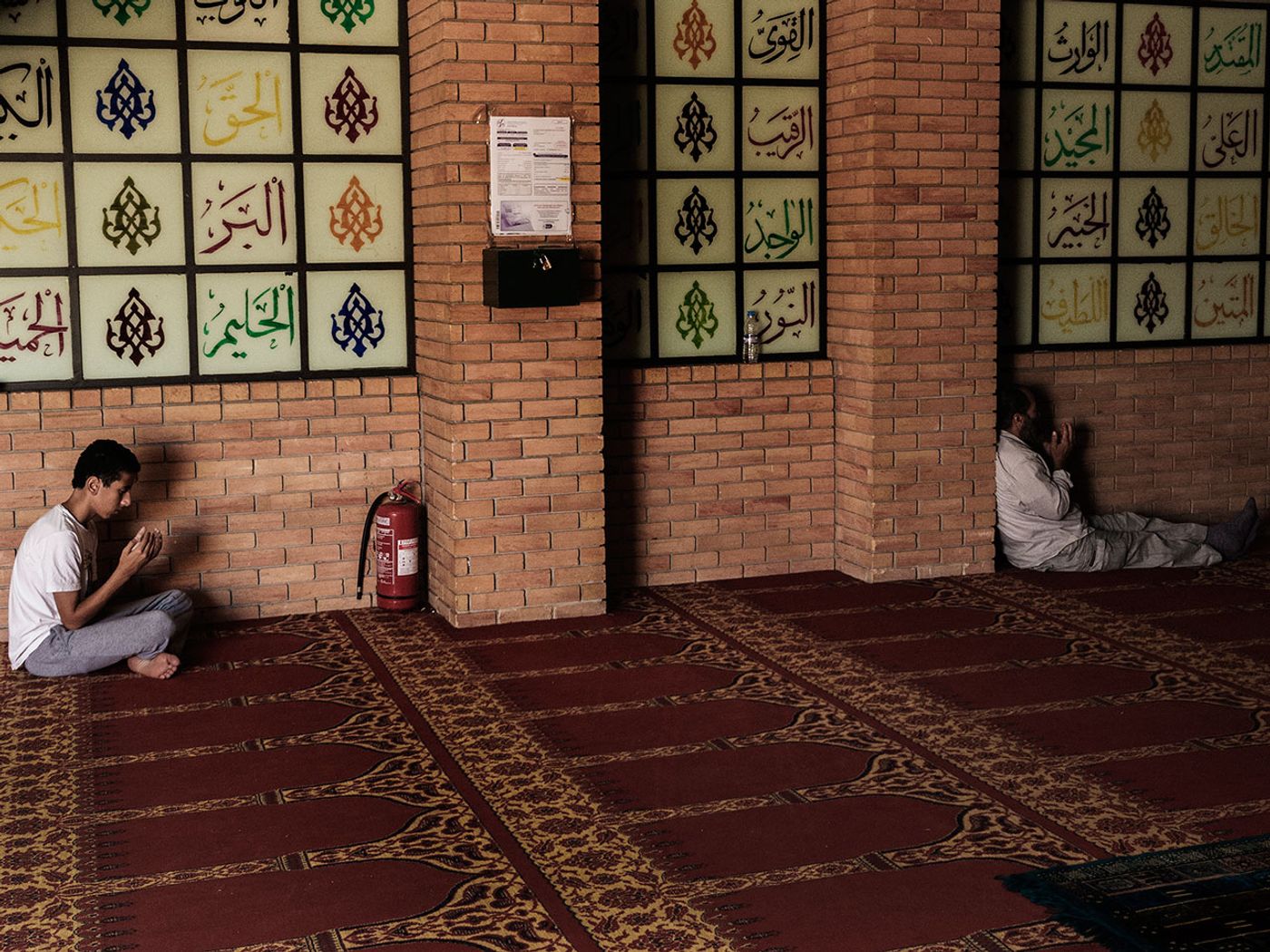
Arabic Coalition, Pireos street © Tassos Vrettos.
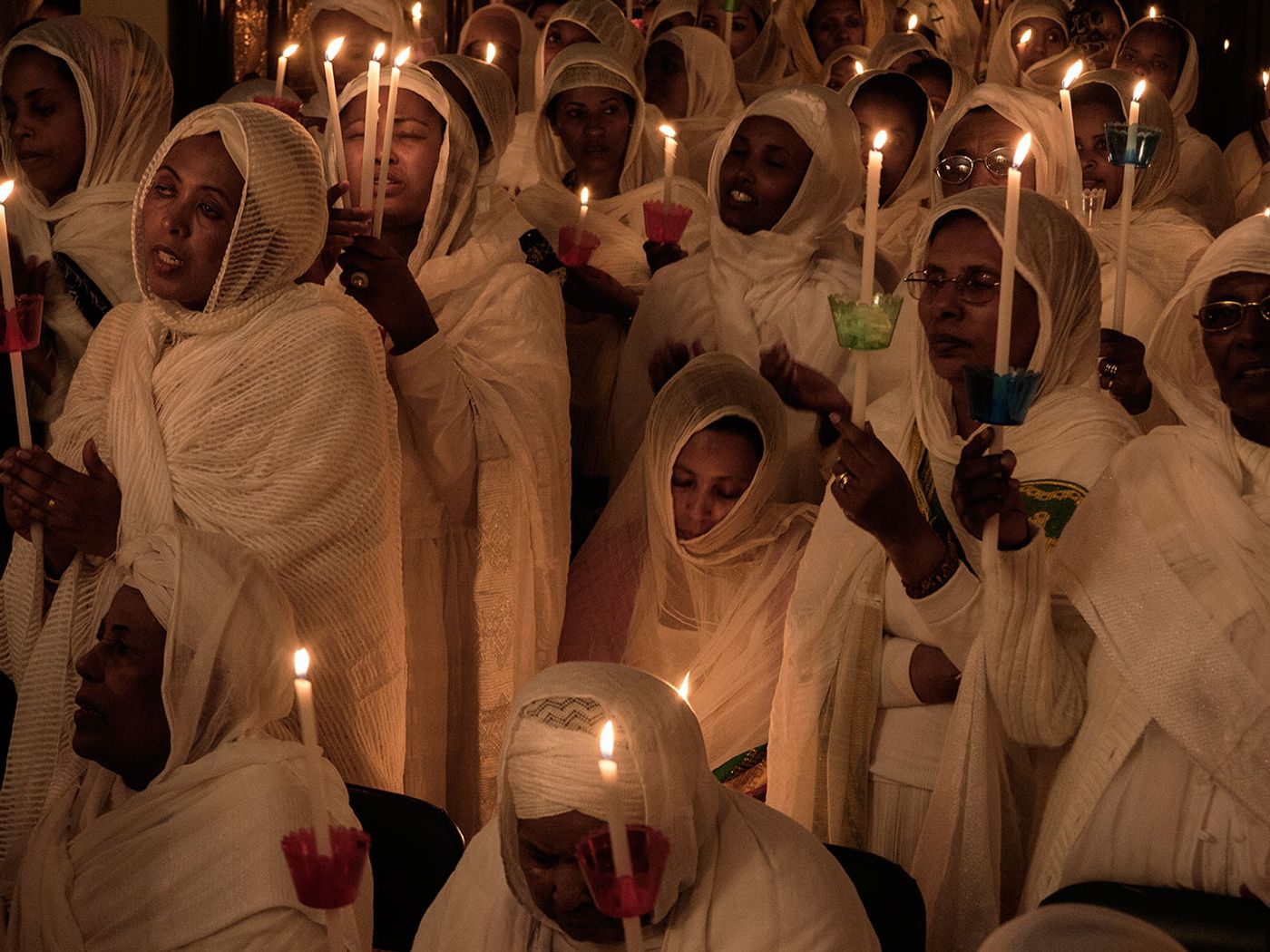
Ethiopian Orthodox Church Kidane Miheret, Polygono © Tassos Vrettos.

Fatima - Zahra Mosque, Marathon © Tassos Vrettos.
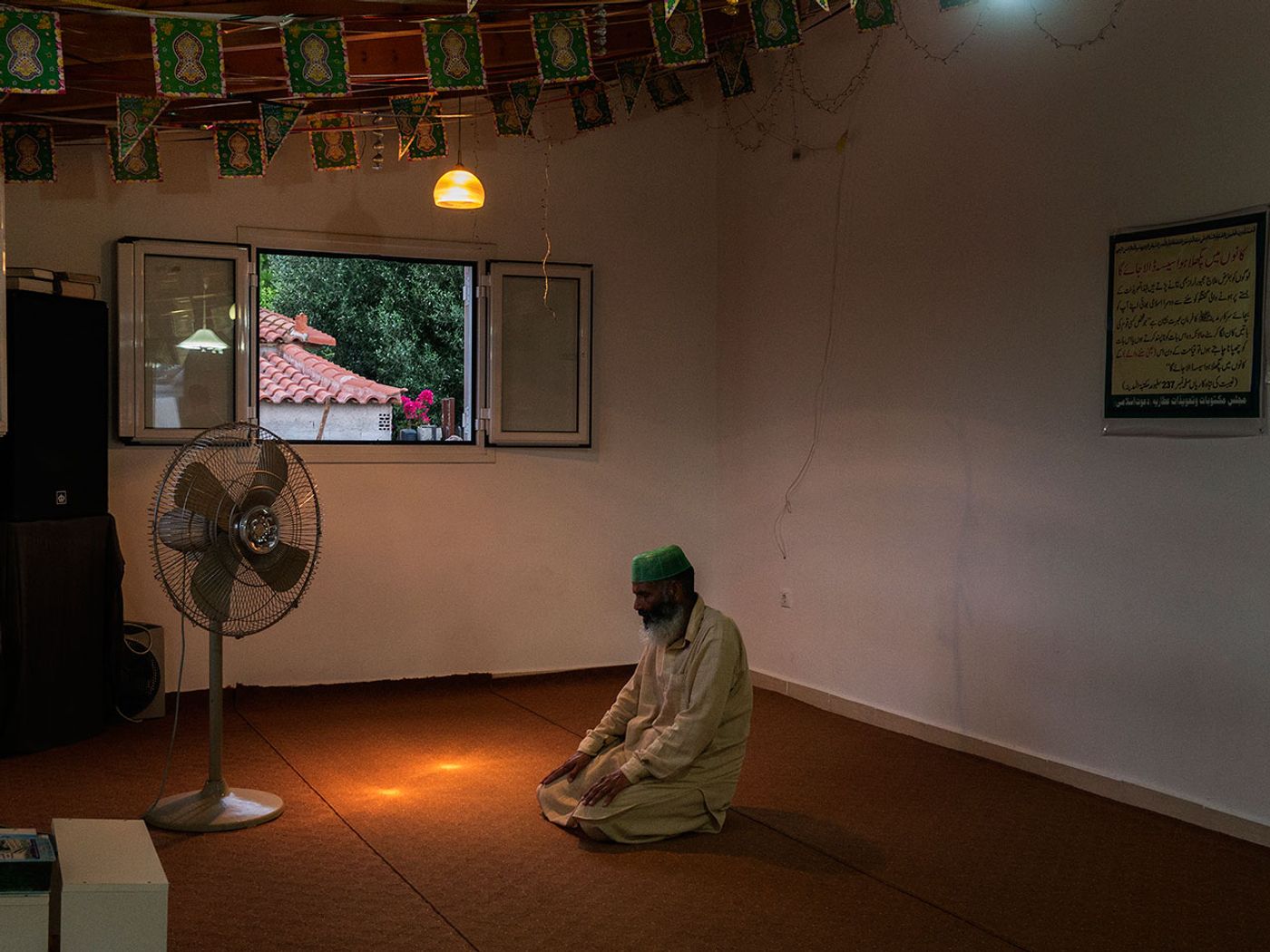
Muslim Mosque, Marathon © Tassos Vrettos.

Shri Guru Ravi Dass Mandar, Marathon © Tassos Vrettos.

Afghani Association-Greece, Peristeri © Tassos Vrettos.
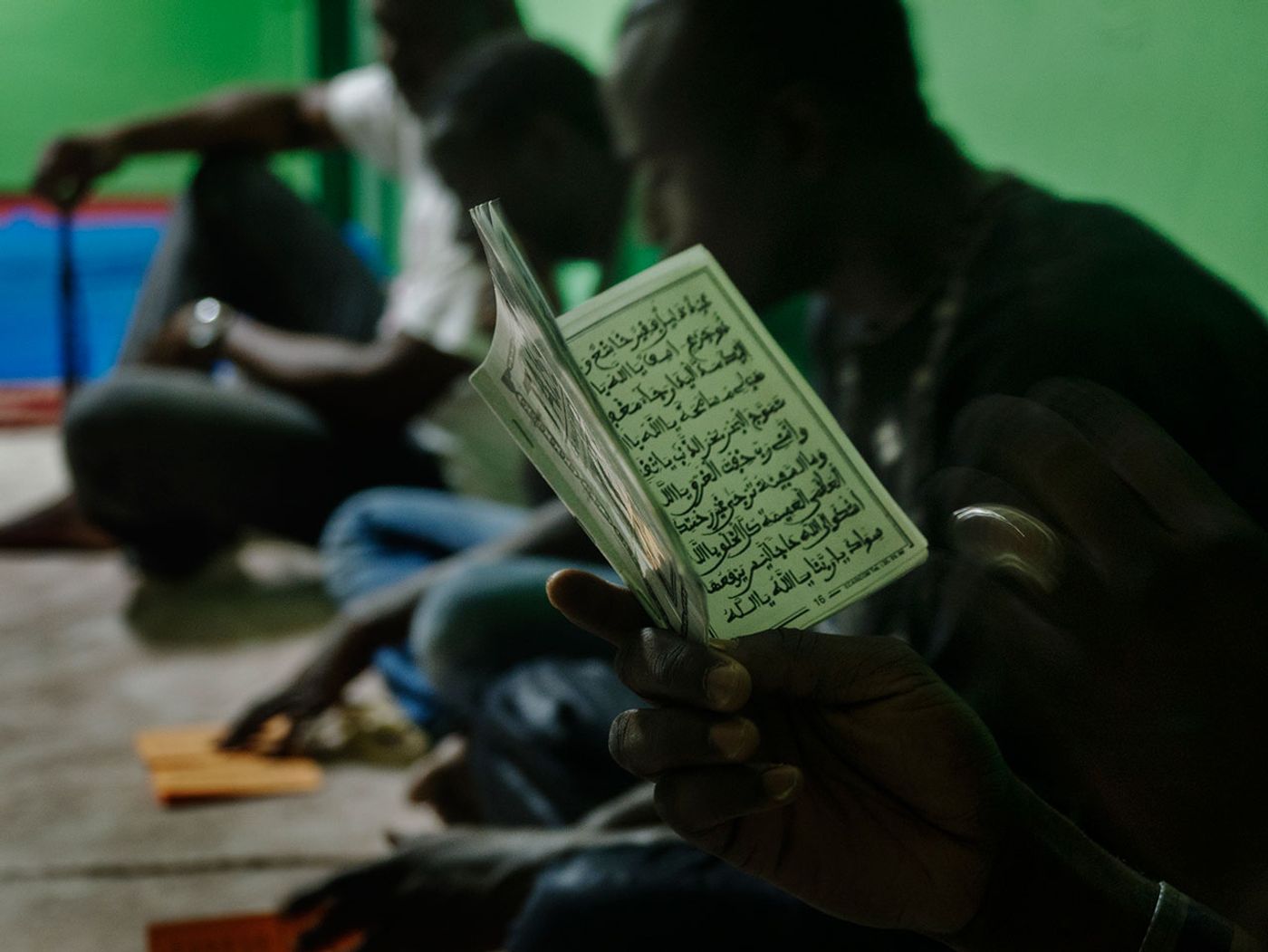
Dahiraa Mouhabina Fillahi - Athens (Senegalese), Koliatsou square © Tassos Vrettos.
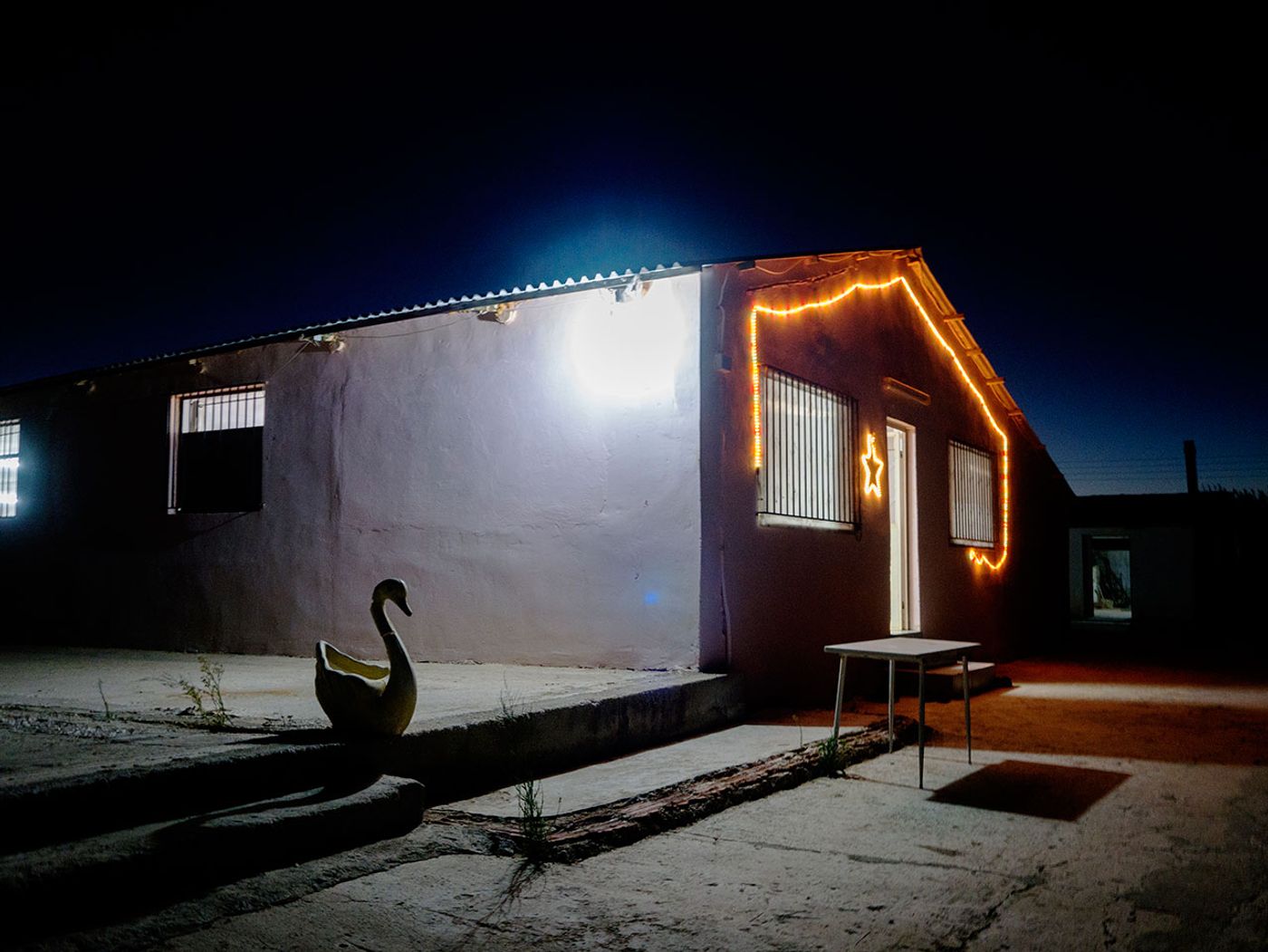
Shri Guru Ravi Dass Amritbani Darwar, Marathon © Tassos Vrettos.

Masgd-Altakwa (Egyptians), Kerameikos © Tassos Vrettos.
